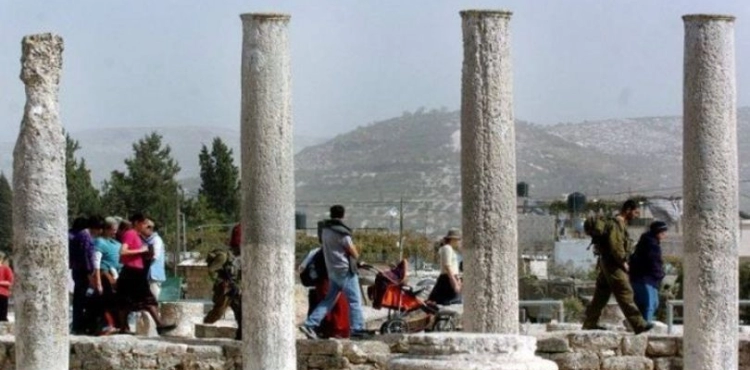Today, Wednesday, Jewish settlers stormed the archaeological area in the town of Sebastia, northwest of Nablus (north of the occupied West Bank), under the protection of the occupation soldiers.
The head of Sebastia Council, Mohamed Azem, said in press statements that "a number of military vehicles and a bus loaded with soldiers stormed the town and closed the entrances to the archaeological square." He pointed out that the occupation soldiers roamed the area carrying maps of the place, without knowing what they were. The occupation usually storms the historic town of Sebastia, to secure the incursions of settlement groups that storm the archaeological area in the town to perform Talmudic rituals and rituals there. Sebastia is located 12 kilometers northwest of the city of Nablus, where the Prophet Yahya Mosque is located. It is also considered to have a long history and a prosperous civilization that spanned more than 3000 years. Historians called it the capital of the Romans in Palestine. The town´s landmarks also include a number of archaeological sites; Including Bayader Square, the "Roman Basilica", the Temple of Augustus, and the Church of the Ras in which John the Baptist (Yahya, peace be upon him) was beheaded, which dates back to the Byzantine period. The town is considered the largest archaeological site in Palestine, and has a special religious status; As archaeologists stress that despite the occupation’s claim that its roots existed in this village three thousand years ago, the Canaanites were before this date and established their civilization there four thousand years ago, after which different civilizations followed, the last of which are the Romans and the Ottomans, whose traces are still Witness this history to this day. Palestinian institutions concerned with anti-settlement assert that the Israeli process of Judaization affects the town of Sebastia after the cities of Jerusalem and Hebron, "which calls for sounding the alarm so that the history of the place and its stones are not distorted." Residents of Sebastia seek to put it on the world tourism map, as one of the important archaeological sites, to ensure its protection from Israeli attempts to control it.​












